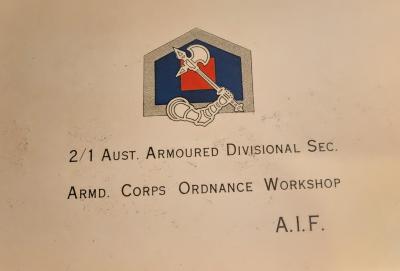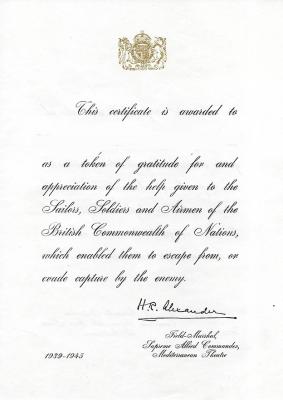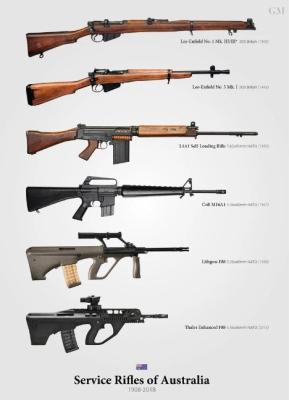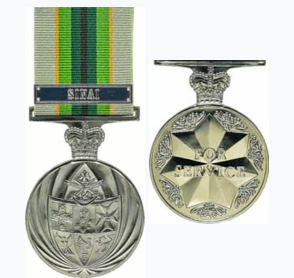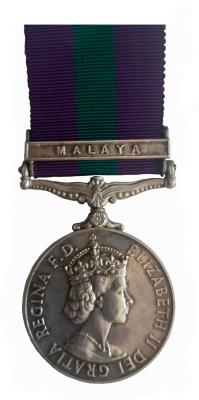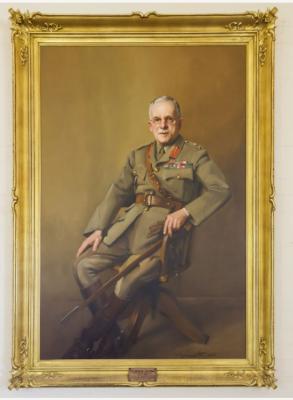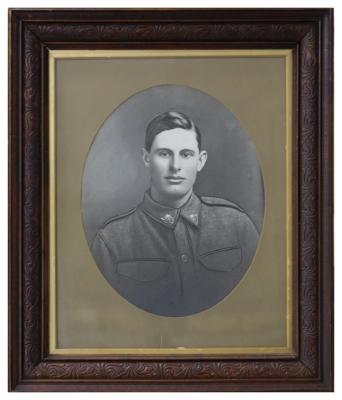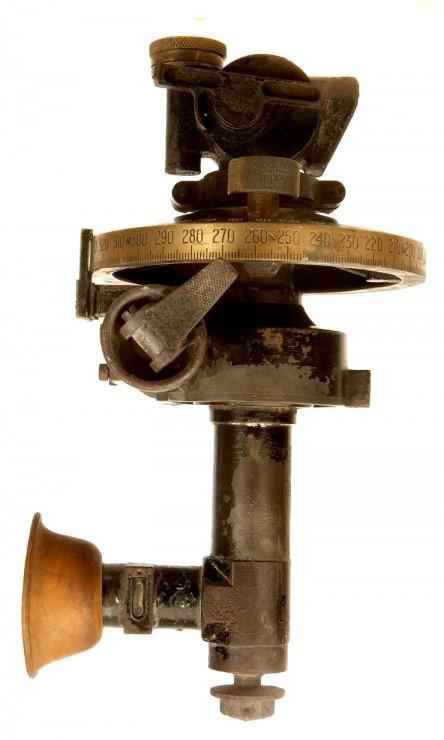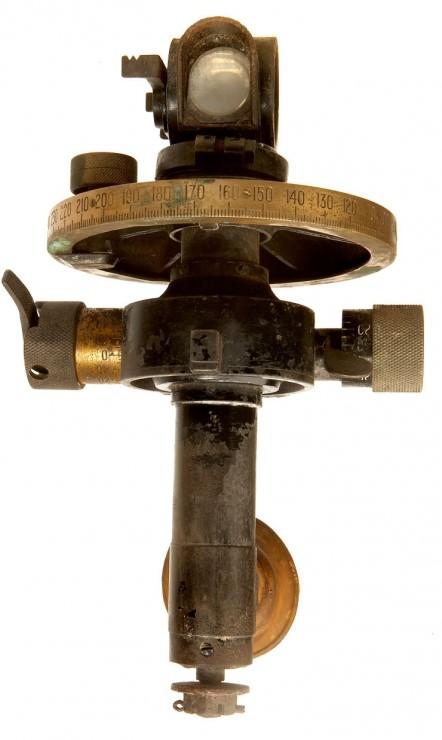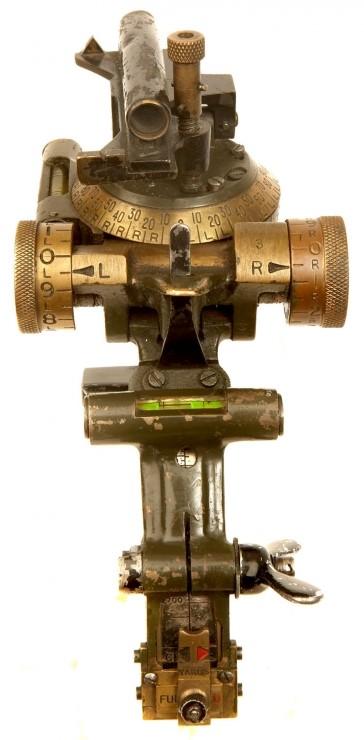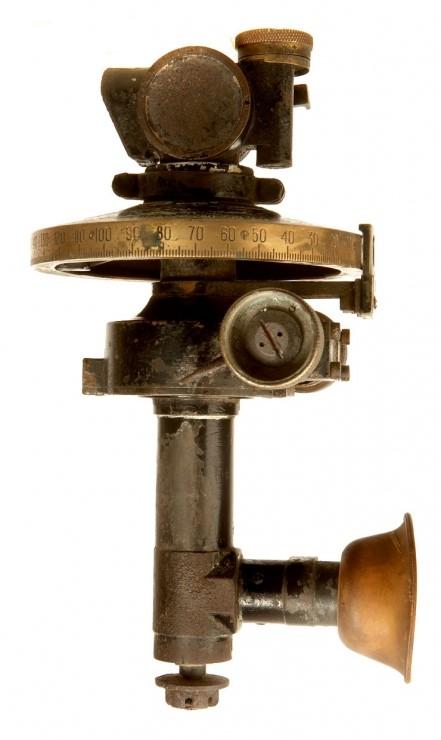World War 1, 18 Pounder Dial Sight
The British No7 dial sight was used on 18 pounder field guns of the Australian Field Artillery during World War 1. It could be used for both indirect periscope sighting and for direct line of sight. The No. 7 dial sight consisted of a fixed eye piece at the bottom and a sighting head at the top that could be rotated in azimuth by 180 degrees in either direction. It was fitted with an azimuth dial and micrometers to allow the azimuth angle for the sighting head to be set very accurately.
The dial sight allowed groups of artillery weapons to achieve a common orientation paving the way for modern artillery command and control. The inception of indirect fire coincided with colonial and then Commonwealth Australian commitments to the Boer War. The range and lethality of modern small arms like the Maxim and Vickers machine guns and magazine rifles rendered exposed field artillery positions untenable. This saw the transition to the modern ‘gunnery problem’: of artillery gun positions sited in defilade and displaced from observers and the supported manoeuvre arm commanders.
Target acquisition benefited from advances in optics, fixation and orientation, while a growing use of meteorology (wind, temperature, density) and standardisation of munitions (storage, shell weight, charge loads) began the path towards accurate predicted fire.
The Boer War experience also revealed shortcomings in early breech-loading, non-recuperating artillery guns. Replacement 18-pounder quick-fire guns and equivalents were introduced into service afterwards, along with heavier calibre howitzers designed for high angle, destruction and neutralisation.
The Gallipoli campaign witnessed Australia’s first wholesale involvement in Industrial-era warfare and all its lethality, complexity and consumption, unmatched in its scale and national commitment. On its arrival on the Western Front in 1916, the Australian Imperial Force and the Australian Field Artillery1 were confronted by a campaign where defence had a considerable advantage over the attack, and manoeuvre had given way to static positions.
Unprecedented developments occurred in improving fixation & orientation of guns amid a growing moonscape of featureless terrain, with refinements in survey instrumentation and computation; calibration of guns through accounting for variance in barrel wear, projectile size and weight, and propellant composition and handling; inception of the novel field of enemy weapon-locating; and rapid advancements in recording and applying meteorological corrections to gunnery calculations
Details
Details
Indirect fire was achieved by pointing the gun in azimuth by a pre-determined number of degrees offset from a reference direction that could be seen in the dial sight. The reference direction could be towards a known feature in the landscape or it could be achieved by using sighting posts some distance away placed in the ground. The advantage of the No. 7 dial sight was that the gun aimer could remain in his seat to look through the sight and then view the reference target in any azimuth direction but usually behind the gun.
This exhibit may be found in the 1917 section of the World War 1 Gallery as part of the Industrial Warfare discussion.
Australian Army Museum of Western Australia
Australian Army Museum of Western Australia
More items like this
Other items from Australian Army Museum of Western Australia
- Pre 1914, Begbie Signal Lamp 1885 - 1915
- World War 2, Western Australia, 2/1st Armoured Division Ordnance Workshop, Christmas Card
- World War 2 - Certificate of Gratitude and Appreciation , Mediterranean Theatre
- World War 2, North Africa, Libya, Tobruk, Surrender Leaflet, April - November 1941
- Poster - Australian Service Rifles from 1908
- Medal - Australian Service Medal
- General Service Medal 1918-62
- Portrait, Lieutenant General Sir JJ Talbot Hobbs KCB, KCMG, VD, 1936
- World War 1, Fretwork Frame and Photograph, 748 VILLIS, 10 Light Horse,1915
- Roll of Honour - D & J Fowler Limited. 1914 - 1919
- World war 1 - Studio Portrait - Currently Unidentified
- World War 1 Studio Portrait - Currently Unidentified


